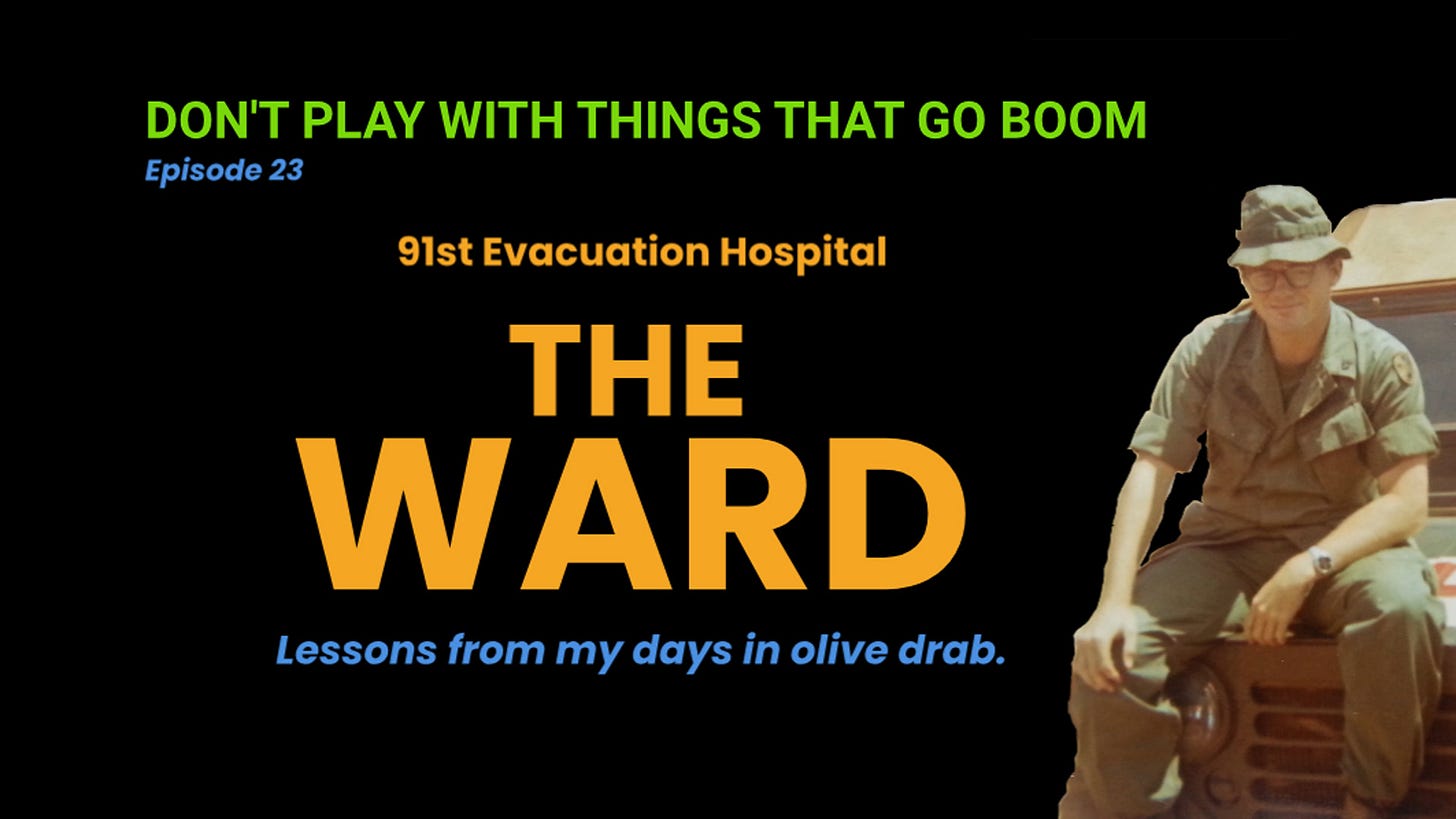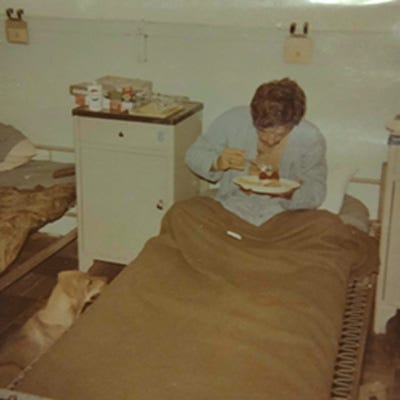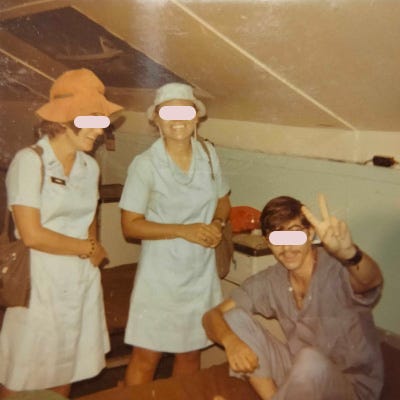After my work at the Division Psychiatrist’s office, it was time to move on to another experience, another learning opportunity.
I was assigned to a hospital ward at the 91st Evacuation Hospital where we worked with patients recovering from surgery.
The ward I worked at had one medic assigned to it and about 10 beds. I don’t remember the exact number of beds — give me a break, it was over a half century ago.
Each bed had an occupant — a wounded soldier recovering from something.
The Basic Routine
The job was fairly straight forward, but I think it was a valuable experience.
I was to regularly monitor the status of each of the soldiers in the ward. That would include checking their wounds for possible infections, keeping their wounds clean, and making sure they took the right meds at the right time.
It also included giving them their meals and having a lot of one-on-one conversations.
We not only spoke about how they were recovering, but we also talked about how they got hurt, if they were going back to the field or heading home, which led to many talks about life back in the states.
A couple of incidents in the ward stick in my memory.
The Gunshot Wound
One soldier, an infantryman, had been shot in the shoulder when he was on an operation in the field. The surgery went well, and he was recovering quickly. I would check his wound each morning, re-bandage it, and encourage him.
One day, I remember asking him what it felt like to be shot.
I hadn’t known all that many people who had been shot. Actually, I only knew one. A friend of mine who went into the Army before I did. He was also an infantryman, and he had been shot in the chest while serving in Vietnam. My friend had a sucking chest wound1, and it could have been fatal, but he survived, and it was his ticket home.
Back to my patient on the ward.
I asked him what it felt like to be shot, and I remember his answer.
He said, imagine a big, strong guy coming up to you when you’re not looking and hitting you as hard as he could with a baseball bat. He said, that’s what it felt like when he got shot.
Getting shot was not just a little “owie.”
It was a painful and potentially serious event.
Jungle Rot
Another patient I remember was an infantryman who had been in the field. He hadn’t been shot, but he had what we called “jungle rot2.”
His leg had been seriously infected from his time spent in the jungle. The doctors had cleaned up the wound, then sent him to the ward to recover.
Each morning, I would take off the bandage, remove the old dressing that stretched beneath the skin in his thigh, clean the area, check for infections, then re-pack the dressing. Then I would re-bandage his wound.
The infection was over a foot in length and re-packing that wound is what I remember.
It was a most interesting experience.
Donut Dollies
I can’t leave my description of my work in the ward without telling you about the Donut Dollies.
For those of you not familiar with Donut Dollies, they were young women who volunteered to go to Vietnam with the Red Cross during the Vietnam War. They didn’t serve donuts to the men. That name came from the women who served a similar role in World War II.
The Vietnam era Donut Dollies visited combat troops on remote firebases, set up recreation centers, put on events, and visited soldiers in hospitals.
“Dressed in their signature pale blue outfits, the Donut Dollies brought smiles, songs, games, and a touch of home to troops.”
Description courtesy of Microsoft Copilot
From 1962-1973, more than 600 women served as Donut Dollies in Vietnam. I’ve included photos of the two girls I got to meet when they visited the ward where I was working.
The minute the Donut Dollies walked into the ward, smiles broke out on the soldiers faces. The Donut Dollies would take time to have one-on-one conversations with each soldier. They would help some write letters home. They would ask about their lives and tried to cheer them up.
I can’t begin to describe to you the impact their visits had on the soldiers in the ward.
They don’t get the recognition they deserve for their work during that time.
Lessons
I have a couple of lessons from my time in the hospital ward.
Don’t get shot
I’m serious. In addition to the potentially bad long term impacts of getting shot, it also hurts. If possible, avoid getting shot.Be the Reason Someone Smiles Today
You may not be a cute girl working in a war zone, or be a part of the Red Cross, but you will meet people in life who are hurting. They may be ill, lonely, depressed, or confused. They need someone to care. Your attitude, your smile, your concern, and your willingness to listen to someone who is hurting is a powerful medicine. Use it! Be the reason someone smiles today.
A sucking chest wound occurs when an injury creates a hole in the chest, allowing air to escape into the chest cavity outside the lungs. These wounds are often caused by stabbing, gunshots, or other injuries that penetrate the chest. Signs of a sucking chest wound include:
An opening in the chest, approximately the size of a coin.
Hissing or sucking sounds when the person inhales and exhales.
Heavy bleeding from the wound.
Bright red or pinkish, foaming blood around the wound.
Coughing up blood.
Jungle rot, also known as a tropical ulcer, is a painful skin lesion caused by a mixed bacterial infection. This condition primarily affects individuals in hot, humid tropical or subtropical regions.
















Share this post